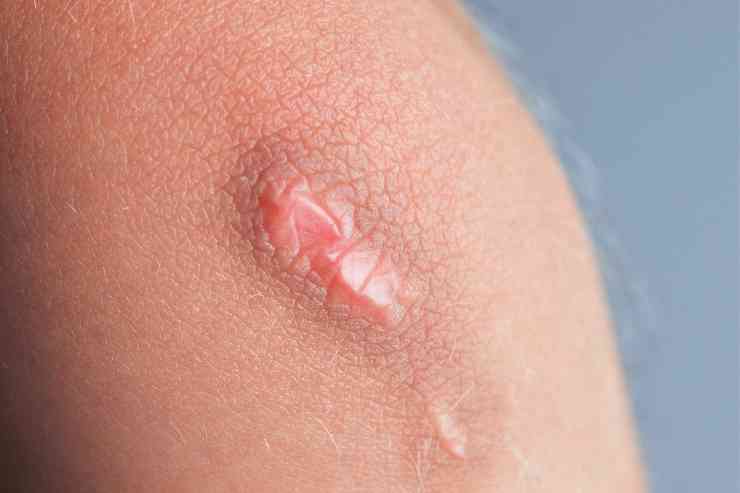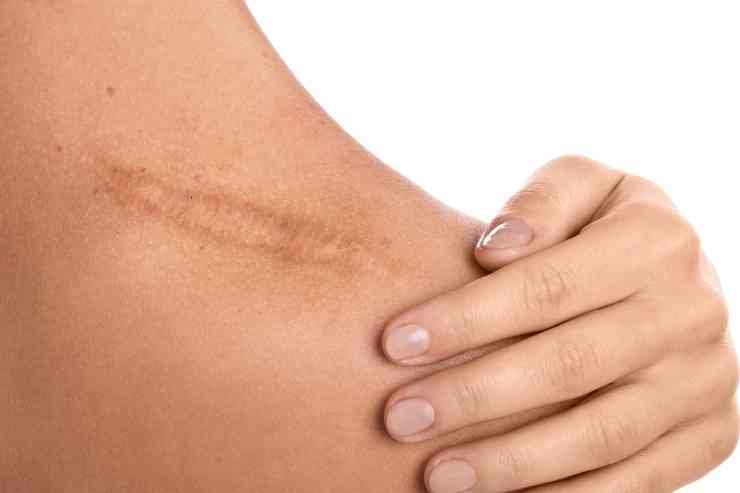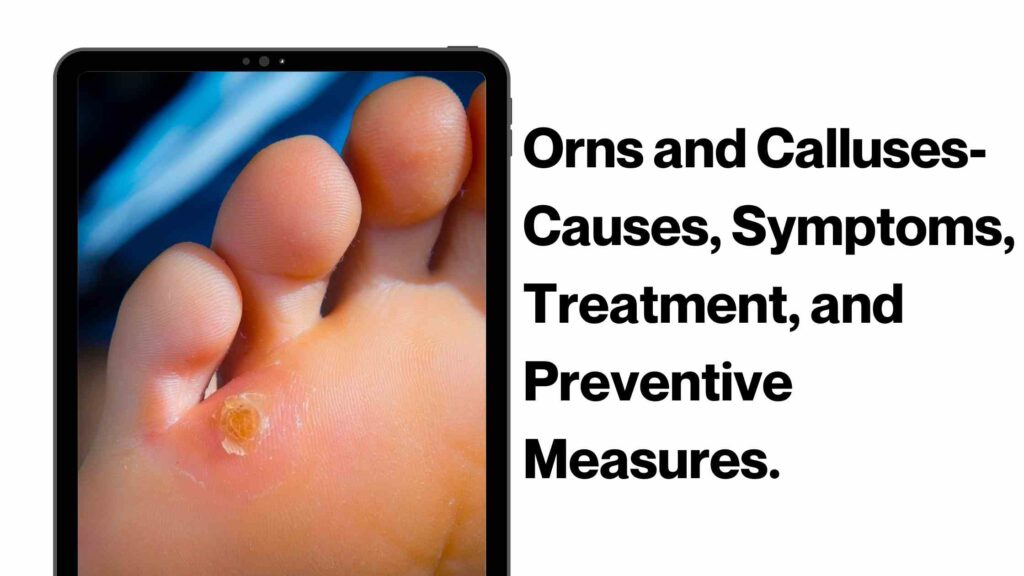A keloid or keloid scar is typically a thick, irregular, and overgrown scar that forms as a response to an injury such as a cut, abrasion, or minor burn. Most of the time, keloid scars occur as an overly aggressive healing response but rarely go away on their own. If we compare keloid scars with usual ones, the latter grow smaller and fade over time. But in the case of keloid scars, the wounds become much larger than the original wound and become challenging to treat. That is why one must talk to a dermatologist if keloid scars form and prevent keloids.
Read more about How Much Does Scar Removal Cost In India?

This article will give you enough information about keloid scars, including their symptoms, causes, and treatments. Read on!
What Is Keloid?
Keloid scar usually forms on the sites where you have had a skin injury. It is a thick, raised scar, and people prone to developing keloids might get it in more than one place. Though a keloid scar is not harmful to a person’s physical health, it can cause emotional distress. The appearance of keloid scars is lumpy skin. You will mostly find keloid formation on your earlobes, shoulders, upper chest, and neck. It is scarce to see keloids on the face, whereas some people might experience a keloid appearance on the jawline.
Read more about What Is Nodular Acne & How Can You Treat It?
How Does A Keloid Scar Look Like?
Keloid scars usually look more significant than the original wound for their thickness and lump-like texture. Keloid scars rise above the rest of the skin and can be identified by:
- Lack of hair on the scar
- A shiny appearance
- Purple or red coloring in the beginning that changes to brown or pale afterward
- An irregular shape that is hard and rubbery
If a keloid scar is formed due to a surgical cut or injury, the scar tissue keeps growing for a while after the wound is closed. Sometimes, it grows until it’s more prominent and more visible. Sometimes, after undergoing surgery, patients experience keloid formation months or years later, and the scarring lasts for years.
Here Are Some Signs And Symptoms Of Keloids You Need To Remember
- It appears gradually: Keloid scars take as long as three to 12 months or even longer to be noticed. Therefore, if your skin starts forming any lumpy scar within a year of the actual skin damage, it can be a keloid.
- Your scar is tender, painful, or itchy: If the scar on your damaged skin feels itchy, tender, or painful, these are the common symptoms that can be a keloid.
- Your scar feels irritated quickly: Keloid scars become irritated from fiction, even from rubbing against clothing. Hence if you have any such experience, beware it can be a keloid.
- It turns darker gradually: We already mentioned the color change in keloid scars. In the beginning, a keloid typically appears to be a red or pink-colored scar that obscures over time and looks darker than the skin around the spot.
Keloid scars are more than just skin imperfections. Depending upon the size of the scar and where it has occurred on your body, it can impact how well you can move that particular area of the body. For some people, keloid scars bring physical symptoms such as itchiness and pain and affect their psychological health. They feel uncomfortable about their keloid being noticeable or unsightly.
Read more about How To Get Rid Of Milia Bumps?
What Are The Causes Of Keloid Scars?
The exact reason why some people develop keloid scars is unclear. But doctors believe that keloid scars form when the cells in our connective tissues, called fibroblasts that secrete collagen, overreact, and produce a high amount of collagen in response to a wound.
If a person is prone to developing keloids, any type of skin injury can lead to keloid formation. Some common causes of keloid formation are:
- Blemishes from acne or chickenpox
- Surgical cuts and other types of cuts
- Ear and body piercing
- Insect bites
- Burns
- Vaccination
- Tattooing
- Tightly braiding the hair

Read more about How to Remove Blackheads from Nose?
There are rare cases where keloids form on the skin without any injury. And such keloids are referred to as spontaneous keloids. The dermatologists identify some risk factors that increase the odds of developing keloids, including:
- Having a family history of keloids: More than 1/3 of people who got keloids at least have one close relative prone to keloids.
- Aging between 10 to 30: People between the age of 10 and 30 are more prone to keloid development on their skin. Although, these scars can occur earlier or later for some people.
- Hispanic, black, and Asian individuals: People with darker skin have a higher risk of developing keloids than people with fairer complexions.
How Are Keloids Diagnosed?
If you are experiencing keloid formation on your skin, keloids are usually diagnosed by a dermatologist. Once you visit the dermatologist’s clinic, they will take your medical history and conduct a visual examination to check the scar’s size, growth pattern, and shape. Don’t panic if your doctor performs a skin biopsy. It is only to rule out more serious conditions.
The Prognosis Of Keloids
When your keloid scars are non-cancerous, they’re still challenging to treat. They can grow back frequently even after they are surgically removed. But when you visit a dermatologist soon after your skin has started forming keloids, you can get measures to reduce the odds of keloids returning after treatment or get ways to minimize their appearance.
Read more about How To Reduce Body Heat Pimples
Till How Long Does Keloid Last?
If your skin is prone to keloids, it can continue to grow for months and years. Though keloids eventually stop growing after a particular time, they do not disappear entirely without treatment. As we mentioned above, keloids can return even after being removed in some cases.
What Are The Treatment Options Available For Keloids?
In general, keloids do not need any treatment. But if your keloid scar causes distress or impedes the movement of the site, treatment will be helpful. Many people seek treatment for keloid scars as they impact their self-esteem and how they feel about their physical appearance. For instance, if the keloid scar is large and visible on your body, your dermatologist will help you find ways to reduce the size and prominence of the keloid.
There is no single treatment that works equally for all keloids. Therefore, your dermatologist might need to suggest a standalone or a combination of treatments based on the type of keloid, year, age, etc. As keloids are hard to reverse, using more than one type of treatment brings better results. Your dermatologist may choose one or more than one treatment options from the following:
Pressure Therapy:
In this treatment procedure, your dermatologist uses a device or a piece of clothing to put pressure on the area of the keloid scar and reduces blood flow to the site. That way, your dermatologist inhibits the growth of the keloid scar. This treatment is effective after surgery, but it is often hard to stick to pressure therapy for many people. The device used in pressure therapy is a bit uncomfortable, and many patients might need to wear them for 6 to 12 months.
Cryotherapy:
Cryotherapy works the best for small keloids. In this process, your dermatologist freezes the keloid from the inside out. This method is often used along with corticosteroid injections. The purpose of the treatment is to make the injections more effective.
Laser Therapy:
In laser therapy, your dermatologist or provider will use high-energy light beams to reduce the size and appearance of the keloid. Laser therapy is commonly used with other treatments, suggesting pressure therapy and corticosteroid injections for better results.
Radiation Therapy:
Generally, radiation therapy for keloid treatment is used after surgery. Lower dose radiation helps in preventing the scar from growing back.
Ligature:
In this procedure, your dermatologist may use a surgical thread to tie around the keloid. They cut off the blood supply to the keloid scar, and the keloid falls off after a specific time.
Silicone Gel:
Silicone gels and patches are used as a treatment modality for keloids. They help flatten and reduce the size and color of the keloid scars.
Surgery:
Surgery is a good treatment option for keloid scars. It is typically combined with other therapies such as injections, silicone treatments, and more. In most cases, keloid scars grow back after surgical removal.
What Are The Medication Options Available For Keloid Scars?
Fluorouracil:
Fluorouracil is a chemotherapy medication and is usually used to treat cancer. Sometimes dermatologists use fluorouracil in combination with corticosteroids to treat keloid scars.
Corticosteroid Injections:
Your dermatologists may administer such injections into the keloid to reduce the inflammation and constrict blood vessels. You may experience some relief in the swelling, itchiness, or tenderness by doing so.
Home Remedies For Keloid Scars
Depending upon the appearance of your keloid scars, you may choose to apply some home remedies before contacting a dermatologist.
Aspirin:
The topical use of aspirin pills can help treat keloids to some extent. Researchers found that aspirin prevents the cells that promote scars from entering the keloid site and helps in the size reduction of the keloid. You can crush two to three aspirin tablets, mix them with enough water to form a paste, and then apply it to the wound site. Let it sit for a while, and then rinse it off. For better results, use it every day until you achieve desired results.
Read more about Open Pores: Causes, Treatments, Results & Prevention Tips
Garlic:
Garlic has specific properties that block the enzymes that contribute to tissue and pigment buildup entering the site. You can take two to three fresh garlic cloves and paste them well. Now apply it to your keloid area and leave for about 15 minutes. Wash it off with cold water and apply a moisturizer. If garlic burns your skin, discontinue the use, or reduce the application time.
Honey:
The anti-inflammatory compounds present in honey may help reduce keloids. Applying honey to the keloid site is a natural alternative to corticosteroid injections. You can dab a little amount of raw honey on the area. Let it sit and rinse it off when the site gets sticky. You can reapply honey as needed until you get your desired results.
Onion:
Many studies support the use of onion for keloid scar treatment. Specific properties of onion speed up healing and reduce the scar height. Onion also helps reduce keloids with Flavanol, Quercetin, and antioxidant properties. Take a small onion and cut it into small pieces. Now squeeze out the juice and apply the juice to the keloid area. Let it sit until dry, and then rinse. Apply it three to four times a day until you see desired results.
How To Prevent Keloid Scars?
If you have a family history of developing keloids, or if your body is prone to develop keloids, you need to be a little more vigilant about taking a few steps to prevent the formation of such scars. Here are a few tips you can follow:
- Avoid piercing your body and getting inked as keloids can occur after such procedures.
- If you face any injury, treat your injury immediately, even if minor. By doing so, you help your skin heal faster and reduce the risk of getting keloids.
- If any of your body parts is wounded, you need to talk to your dermatologist to know the best ways to care for and dress it. That way, you can avoid keloid scars from developing.
Some Frequently Asked Questions Answered About Keloid Scars
Is Keloid Scar Different From Hypertrophic Scar?
Hypertrophic scars are raised, and thick scars develop in the areas where the skin is injured. Though for a human body, scars are normal, hypertrophic scars occur due to an abnormal response to skin injury. When our body produces too much collagen, the scar grows more prominent than the typical scar. Keloid and hypertrophic scars are similar, but the only difference is that hypertrophic scars do not extend beyond the original injury site. But keloid scars continue to grow beyond the actual injury site.
Are Keloid Scars Contagious?
Keloid scars are benign and not contagious. Therefore, if you meet someone with keloid scars, you can rest assured that it won’t occur on your body.
Can Keloids Form Without Injury?
In some people, spontaneous keloids occur, and those keloid scars develop without any history of trauma or surgery. But such situations are rare.
Do Keloid Scars Bleed?
Yes, keloid scars can bleed and become infected. Keloid scars occurred in many areas, including the shoulders, chest, neck, upper back, ears, and face. In the first few days of developing a keloid, you may notice a bump or general swelling around the wound. Many people notice bleeding and bruising at this site in the first weeks after getting keloid scars.
Conclusion:
If your keloid scar keeps growing, it is better to talk to your doctor instead of continuing with home remedies. After a thorough diagnosis, your doctor will prescribe over-the-counter medications, creams, gels, and therapies. However, keep in mind that no matter how you treat keloids, they have a very high chance of returning once they occur.
